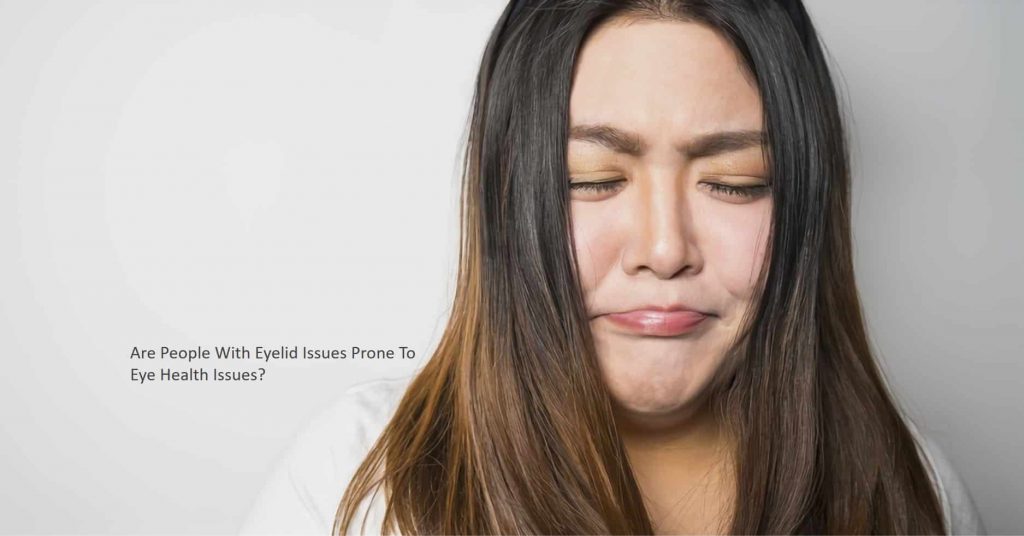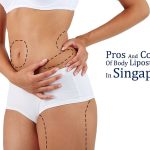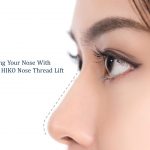Eyelid issues like droopy eyelids are considered a serious obstacle in an individual’s beauty and confidence. This makes people opt for incisional double eyelid surgery widely throughout the globe. However, not all people are after the fad of going under the knife just to look better. These people genuinely have eyesight issues, and either have developed or are at risk of serious eye health issues.
So, “yes,” people with eyelid issues are prone to eye health issues.
Eyelid Issues That Have An Adverse Effect On The Eye Health
Following eye health concerns occur due to eyelid issues:
- Epiblepharon which causes eyelashes to grow inwards
- Dermatochalasis which causes excessive skin folds on the eyelids
- Ptosis eyelid which causes eyelids to droop
Epiblepharon
 Epiblepharon also referred to as inverted eyelashes, is a condition of an inward-growing eyelash, commonly found in Asian children. It is a congenital defect that 10 percent of Asian children are born with. Out of those born with this condition, only about 46 percent are diagnosed at birth, reports Singapore’s largest healthcare provider, Sing Health. Doctors diagnose about 24 percent of the children when they turn one and 2 percent between the age of 5 and 18.
Epiblepharon also referred to as inverted eyelashes, is a condition of an inward-growing eyelash, commonly found in Asian children. It is a congenital defect that 10 percent of Asian children are born with. Out of those born with this condition, only about 46 percent are diagnosed at birth, reports Singapore’s largest healthcare provider, Sing Health. Doctors diagnose about 24 percent of the children when they turn one and 2 percent between the age of 5 and 18.
Causes Of Epiblepharon
Down’s syndrome – one of the characteristics of Down’s syndrome is inverted eyelashes. Children who are born with Down’s are also present with epiblepharon.
Obesity – People who are obese have inverted eyelashes due to excessive folds of the skin on and around the eyes resulting in pronounced inverted eyelashes.
Thyroid diseases – Secondary epiblepharon can develop in people who have an untreated thyroid condition.
In 72 percent of adolescents and adults diagnosed with epiblepharon, the symptoms appear in the lower eyelid. Also, it is more likely to occur bilaterally.
In epiblepharon, the position and form of the eyelashes of the child are close to normal; however, they are turned inwards. Epiblepharon is similar to trichiasis, which is a common eyelid abnormality that mostly occurs due to eye infections. In trichiasis, the eyelashes grow back towards the eye and may touch conjunctiva or cornea.
Eyelashes are pushed inwards due to the extra horizontal folds of skin, causing them to rub against the cornea and induce irritation and discomfort in the eyes.
If left untreated, serious damage can occur to the cornea of the eye because of frequent scratching that occurs due to rubbing. This poses a risk of developing severe visual problems.
Dermatochalasis
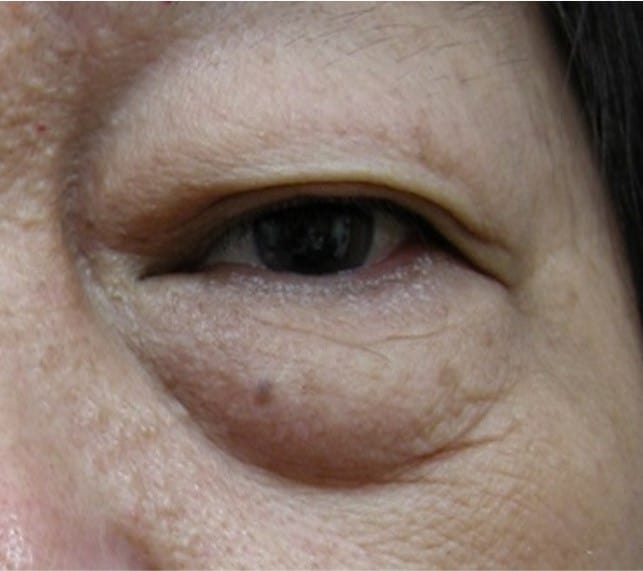 Another condition that can affect eye health because of eyelid issues is Dermatochalasis. It can occur in both the upper and lower eyelids, but it is more commonly found in the lower eyelid.
Another condition that can affect eye health because of eyelid issues is Dermatochalasis. It can occur in both the upper and lower eyelids, but it is more commonly found in the lower eyelid.
Causes Of Dermatochalasis
Excessive skin on the eyelid – It can occur due to an excessive amount of skin on the eyelid. With the loss of skin elasticity in old age, dermatochalasis most often develops in older adults, but younger individuals can also suffer from it.
Other causes include:
- Weakened connective tissue
- Thyroid eye disease
- Renal failure
- Genetics
As for the symptoms, one may look tired or apprehensive in mild to moderate cases. In severe cases, peripheral vision impairment can occur in patients. The saggy and folded skin makes this condition highly noticeable due to the swollen and puffy appearance of the eyes.
Other signs and symptoms can include:
- Difficulty reading
- Loss of peripheral vision
- Elevating the brows for improving vision
- Dryness and irritation of eyes
- Frontal headaches
- Dermatitis
Ptosis Eyelid
Ptosis, also called blepharoptosis, is an eyelid condition in which drooping of eyelids occurs. It is a condition predominantly caused by weakness of the levator muscle of the eyes.
Causes Of Ptosis Eyelid
The inefficient functioning of the overstretched levator muscle leads to the drooping of the lid margin. The droopy eyelids then begin to obstruct the vision. Ptosis can either be acquired or congenital. Acquired ptosis develops due to the process of aging, and congenital is present at birth. Ptosis can also occur as a result of paralysis (such as Bell’s palsy), migraine or nerve damage.
A major symptom or habit accompanied with ptosis is tilting of the head backward to be able to see under the obstructing drooping eyelid as well as raising of eyebrows to lift the eyelids. This can later manifest as a chronic neck pain issue.
How Can You Resolve The Eyelid Issue?
The choice of procedure for an individual depends on the severity of the case and their personal inclination. While the non-incisional technique is done for mild cases of droopy eyelids, incisional double eyelid surgery is performed for moderate to severe cases.
Non-incisional double eyelid surgery
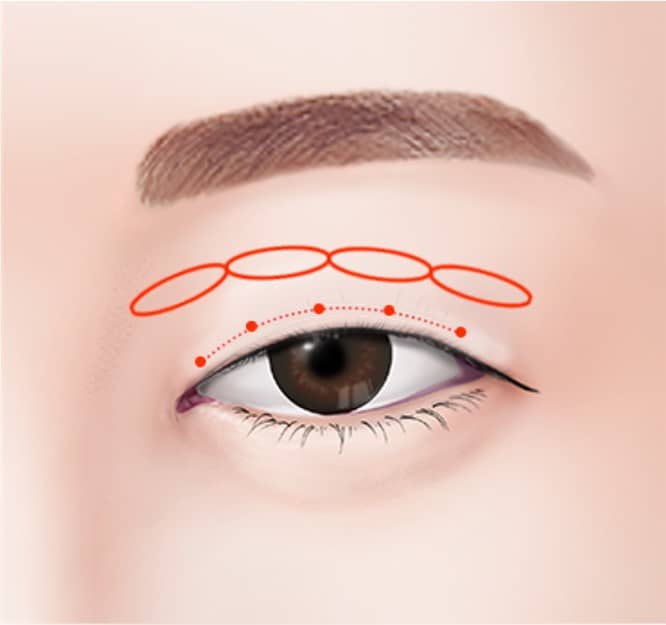 Also called suture blepharoplasty, non-incisional double eyelid surgery involves the stitching of the eyelids with the help of a suture to create a crease. Due to the minimal bruises, this procedure is also known as the scarless technique. It is performed under local anesthesia injection and takes about 30 minutes to complete.
Also called suture blepharoplasty, non-incisional double eyelid surgery involves the stitching of the eyelids with the help of a suture to create a crease. Due to the minimal bruises, this procedure is also known as the scarless technique. It is performed under local anesthesia injection and takes about 30 minutes to complete.
Incisional Double Eyelid Surgery
 During this procedure, a scalpel is used to make an incision on the upper eyelid through which the excessively lengthened muscle in the eyelid is excised. It also involves the elimination of excess fat and skin from the eyelid. The eyelid is then sutured upwards, which lifts the eyelid higher when the eyes are opened. The results of incisional double eyelid surgery are durable and long-lasting.
During this procedure, a scalpel is used to make an incision on the upper eyelid through which the excessively lengthened muscle in the eyelid is excised. It also involves the elimination of excess fat and skin from the eyelid. The eyelid is then sutured upwards, which lifts the eyelid higher when the eyes are opened. The results of incisional double eyelid surgery are durable and long-lasting.
The duration of the procedure is approximately 60 minutes, with a downtime of 3 weeks. With this treatment procedure, numerous eyelid issues can be resolved, including droopy upper eyelids, excess skin that obstructs vision, redefining the shape and form of the eyes. It involves scarring; however, these scars fade away with time and disappear after 4-5 months.
What to Expect After Double Eyelid Surgery
The recovery for Non-incisional Double Eyelid is around 7 to 10 days. Bruising, swelling and slight soreness on the eyelids are expected. However, post-surgery care is relatively simple. There is no need for suture removal, but your doctor may advise you to cleanse the eyelid area and apply topical antibiotic cream during initial recovery.
When it comes to Incisional Double Eyelid Surgery, recovery is slightly longer and takes around 10-14 days. The suture removal is done 7 days after the procedure. You may note some bruising and swelling on and around your eyes after surgery and that should subside after the first week of recovery.
Tightness and soreness in your eyelids after surgery is expected and your doctor may prescribe some pain medications for you. Your eyes may also feel watery, dry, itchy, sticky, or photosensitive. Some may also experience blurry vision for a few days.
Tips on Post-Surgery Care at Home
For a quick and efficient recovery, follow the post-surgery care tips.
Activity
 Take adequate rest and don’t tire yourself. Sufficient sleep will help you in fast recovery.
Take adequate rest and don’t tire yourself. Sufficient sleep will help you in fast recovery.- Immediately after the post-surgical period, sleep with your head elevated above the heart to prevent fluid accumulation. You can use 2 or 3 pillows to keep your head raised.
- Don’t overwork your eyes. Avoid excessive reading and screen time for a couple of days as your eyes are sensitive and will quickly get stressed.
- Avoid wearing contact lenses for about 2 weeks until your doctor approves.
- Avoid wearing eye makeup or any sort of lotion and cream for at least 2 weeks.
- You can take a bath and wash your hair the next day of surgery, but make sure not to expose your eyes to water, soap, shampoo, and hair spray, particularly for the first week.
- Don’t rub your eyes or put pressure on them.
- Dying or perming your hair should be delayed for at least 10 days post-surgery.
- Avoid bending over or any other strenuous activities, such as weight lifting, jogging, biking, or aerobic exercise, for 2 weeks after
- Don’t go swimming or use hot tubs for at least 2 weeks.
- Slow walks can help to reduce swelling.
- Wear sunglasses if you intend to head out for a stroll.
Medication
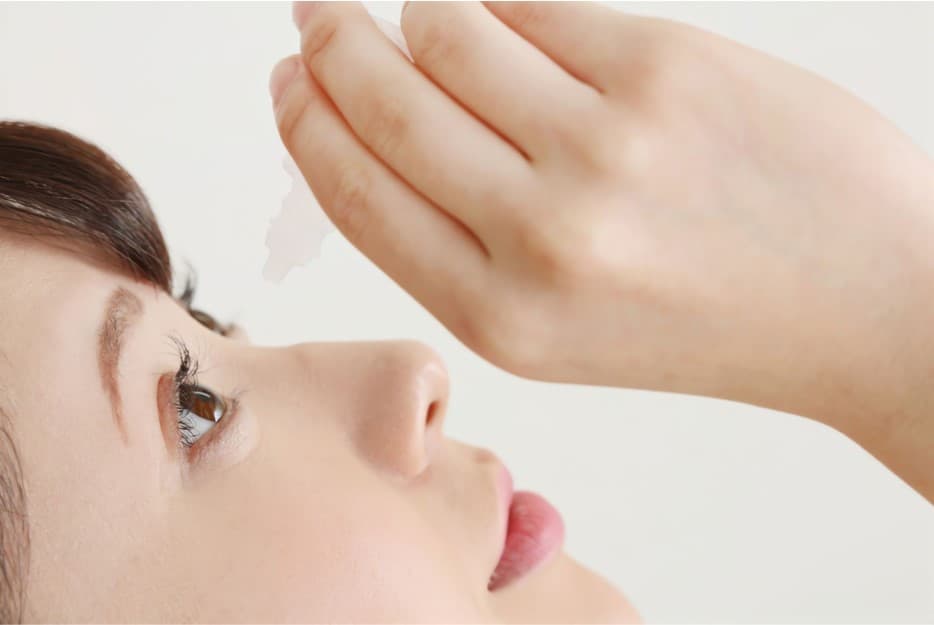 Consult a doctor if you need to take any medicines and follow the instructions. For example, if you’re prescribed aspirin or any other blood thinner, discuss it with your doctor.
Consult a doctor if you need to take any medicines and follow the instructions. For example, if you’re prescribed aspirin or any other blood thinner, discuss it with your doctor.- If using eye drops or antibiotics, strictly follow your doctor’s advice.
- Don’t forget to wash your hands before using eye drops.
- Follow your doctor’s guidelines closely when taking medication.
- If there is a bandage on your eye, don’t remove it without your doctor’s recommendation.
- Keep the area around your eyes clean and dry.
Ice
Put a cold pack or ice wrapped in a cloth on your eyes. Repeat this every 2 hours for 10 to 20 minutes for at least 3 days after surgery. This will imminently reduce the post-operative swelling.
Who Should I Look For?
You would want your incisional double eyelid surgery to be performed accurately in order to get the desired results. This can be ensured by opting for a board-certified plastic surgeon for your procedure.
The certified surgeons at Dream Plastic Surgery are well equipped in terms of knowledge, eye for beauty, and the skill to perform incisional double eyelid surgery. As a result, you not only get optimal results but reduce your risk from post-surgical complications due to the expertise of the professionals.
How Much Does Double Eyelid Surgery Cost In Singapore?
Double eyelid surgery Singapore cost varies from individual to individual depending on various factors like the location and type of clinical setting, the clinician’s expertise, the severity of your case, and your personal needs and desires.
The non-incisional technique typically costs around $3000 – $5000 and incisional technique will cost around $5000 – $8000.
Speak With A Board-Certified Plastic Surgeon
Accomplishing a natural-looking and redefined eyelids are now possible. However, you should have realistic expectations from the procedures. Discuss your case with a doctor and make a well-informed decision for the type of surgery you should opt for.
About Dream Aesthetics and Plastic Surgery
Bespoke surgical for cosmetic or medical reasons is what Dream covers to bring out the beauty in every individual. Going beyond the aesthetics and working on physical anomalies are what we value the most in leading our patients to cherish self-improvement and confident lifestyles.
Derived from Associate Professor Vincent Yeow’s long-standing experience performing plastic surgery in Singapore, our treatment plans deliver physical remodelling in our patients’ favour. One of the notable remodellings is droopy eyelid correction. The ptosis surgery used for treatment eventually fixes drooping eyelids, improves vision and enhances appearance.
Most importantly, as a trustworthy plastic surgery and aesthetic clinic, we treasure positive and natural outcomes for each individual. We will ensure to deliver the beauty refinement of your dream without compromising your safety and privacy.

